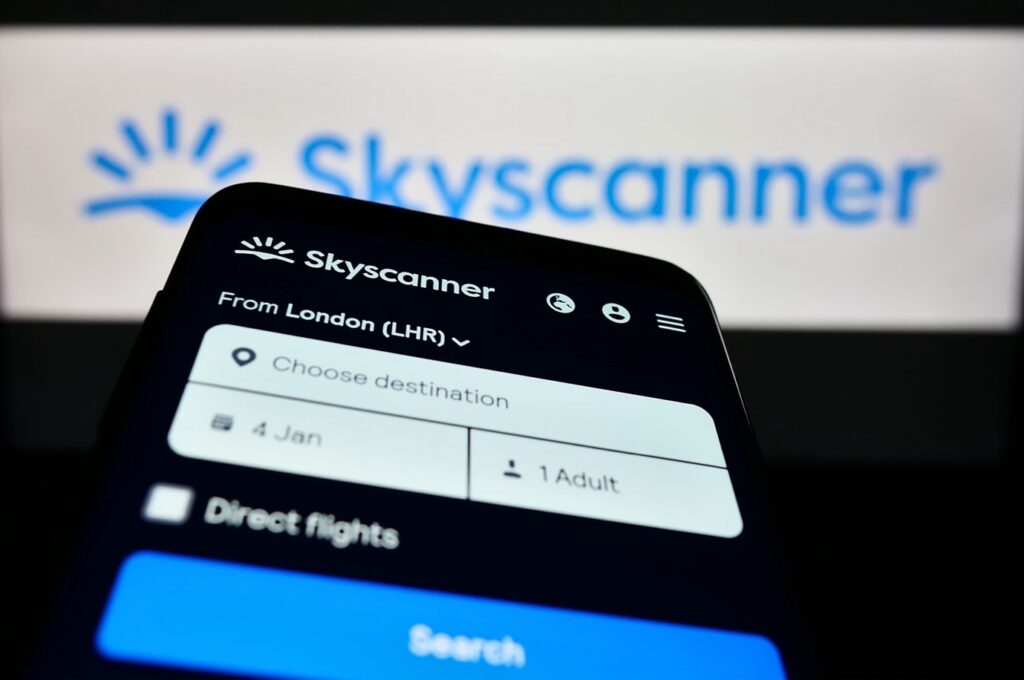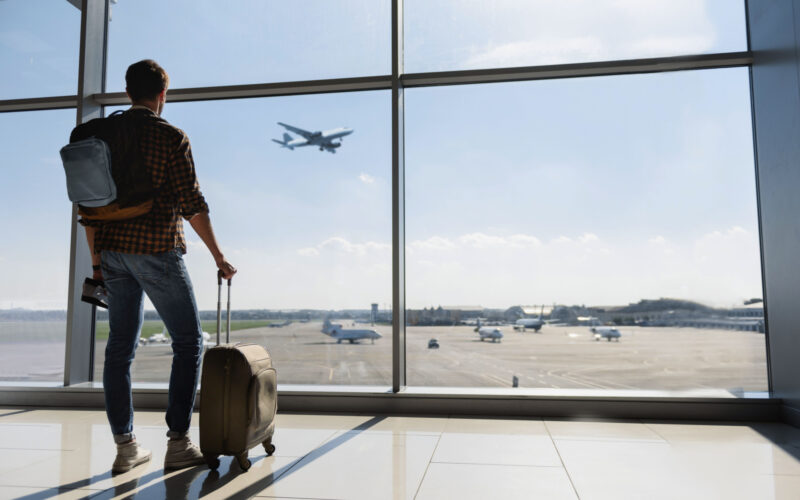In the world of air travel, standby flights have long been an option for travelers seeking flexibility and potential cost savings. ‘Standby’ refers to the practice of waiting for an available seat on a flight, typically when the original flight is full or when a traveler wishes to change their itinerary at the last minute.
While standby flights can offer advantages, there are also potential drawbacks to consider. Here we will delve into all the pros and cons, as well as providing useful tips for travelers interested in understanding and making the best out of the standby flight system.
What is standby traveling?
Standby traveling, also known as flying standby, refers to a travel option in the airline industry where passengers do not have a confirmed reservation on a particular flight but instead choose to wait at the airport in the hope of securing a seat on an earlier or later flight on the same day or within a specific window of time.
In the past, standby travel was more common and accessible to passengers, allowing them to take advantage of empty seats or last-minute cancellations on flights. However, with changes in airline policies, increased demand for air travel, and security concerns, the option of standby has become more limited and sometimes not available for certain passengers.
There are two main scenarios in which standby traveling may or may not be an option:
Standby available
Some airlines still offer standby options for passengers, especially if they have flexible tickets or hold elite status in the airline’s loyalty program. In such cases, passengers can inquire at the airport counter to see if there are seats available on an earlier flight than their originally scheduled one. If there are open seats, they may be able to get on that flight without paying any additional fees or penalties.
Standby not available
Many airlines no longer offer standby as a common option for all passengers. This is especially true for those who have booked non-flexible or non-refundable tickets, as these tickets usually have strict rules regarding flight changes. Additionally, airport security measures have made it more challenging for passengers to wait around at the airport without a confirmed reservation.
Pros of standby flights
Cost savings
One of the most enticing aspects of standby travel is the potential for reduced fares. Airlines commonly offer standby tickets at a discounted rate, allowing budget-conscious travelers to secure a seat on a flight that might otherwise be financially out of reach to them. This is particularly true when booking last-minute flights, as airlines may be willing to fill empty seats at a lower price than usual.
Flexibility
Standby flights provide travelers with a degree of flexibility that traditional bookings may not offer. If you have a flexible schedule or are willing to adjust your travel plans, standby can be a great option. It allows you to be on the lookout for flights with available seats, offering the possibility of flying earlier than planned or catching an alternative flight if your original choice is overbooked or delayed.
Chance for upgrades
Sometimes standby passengers can be upgraded to a higher class of service if there are available seats. This can be a pleasant surprise, providing a more comfortable and enjoyable travel experience without any added cost.
Cons of standby flights
Uncertainty
The biggest drawback of standby travel is the inherent uncertainty involved. Ultimately there is no guarantee that you will secure a seat on your desired flight, particularly during peak travel seasons or on popular routes. This uncertainty can prove particularly challenging for travelers with strict schedules or time-sensitive commitments.
Limited flight options
Standby passengers are limited to flights with available seats. This means that if a flight is already full, you might have to wait for another flight or consider alternative routes, potentially disrupting your travel plans. It’s important to have a backup plan in place and be prepared for potential delays or changes to your itinerary.
Stress and waiting
Standby travel can be stressful, especially if you are in a hurry or have connecting flights to catch. Waiting for an available seat can be nerve-wracking, and it requires patience and flexibility. Additionally, if you are traveling with companions, there is a chance that you may not secure seats together on the same flight.
Tips for standby travelers
Research airlines and policies
Before considering standby travel, it’s important to research different airlines and their specific standby policies. Some airlines may offer standby only for their own employees, or else exclusively to frequent flyers or specific passenger categories. Understanding the rules and regulations of each airline will help you to make informed decisions and increase your chances of success.
Be flexible
Flexibility is key when it comes to standby travel. Consider alternative travel dates, airports, or even destinations if necessary. Being open to adjusting your plans will provide you with more flight options and increase the likelihood of you finding an available seat.
Arrive early
If you decide to try standby travel, arrive at the airport early. Being present at the check-in counter ahead of time will give you a better chance of securing a seat, if one should become available. Airlines typically prioritize passengers on standby based on their check-in time, so arriving early improves your position in the queue.
Stay informed and patient
Stay updated on flight statuses and seat availability by checking regularly with the airline’s staff or using their mobile app. Patience is crucial during the standby process, as it may take time to secure a seat. Remain calm and understanding, even if there are delays or changes to your travel plans.
Consider dressing appropriately
In some cases, airlines have been known to prioritize standby passengers based on their appearance or attire. While this is not a universal practice, it doesn’t hurt to dress neatly and comfortably, especially if you’re hoping for an upgrade. Presenting yourself well might potentially increase your chances of being selected for an available seat.
Explore alternative airports
If your preferred airport doesn’t have available standby flights, consider nearby airports as alternatives. Smaller or less busy airports may have more open seats and provide you with additional flight options. However, do bear in mind the logistics and potential transportation costs associated with traveling to and from these alternative airports.
Join frequent flyer programs
Enrolling in frequent flyer programs with different airlines can provide you with benefits and privileges, including standby options. Accumulating miles and achieving elite status can increase your chances of securing a standby seat or being prioritized on a waitlist.
Have a backup plan
It’s essential to have a backup plan in case you are unable to secure a standby seat on your desired flight. Research alternative flights, consider nearby airports, or even explore ground transportation options if necessary.
Use reliable travel apps
Take advantage of travel apps and websites that provide real-time flight information, seat availability and standby options. Apps like Skyscanner, Kayak or airline-specific apps can assist you in finding available flights, comparing prices and making informed decisions when seeking standby flights.

Consult with airline staff
While technology is helpful, it’s also vital to communicate directly with airline staff. They have access to the most up-to-date information on seat availability and can provide guidance and assistance throughout the standby process.


